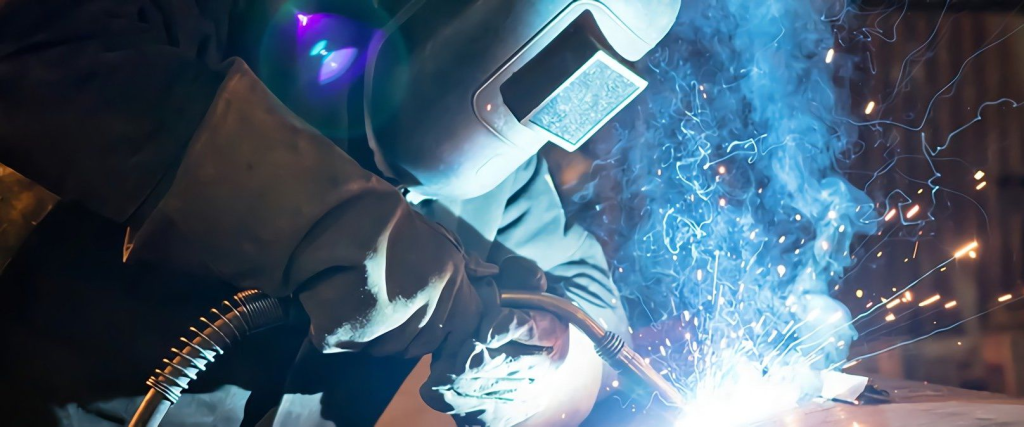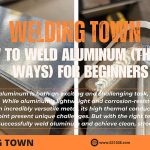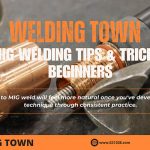Welding on a car is a skill that can open up many possibilities for repair and customization. For beginners, the process may seem daunting. However, it can be manageable and enjoyable with the proper knowledge, tools, and practice. This guide provides a comprehensive overview of how to weld a car, focusing on the essential steps, techniques, and safety measures.
Understanding the Basics of Car Welding
Welding involves joining metal parts together by melting them and adding a filler material. The most common types of car welding are MIG Welder, TIG Welder, and Stick Welder. Each method has advantages and is suitable for different repairs and modifications.
MIG Welding
This is popular for its ease of use and versatility. It involves feeding a continuous wire electrode through a welding gun into the weld pool, joining the metal pieces together. Due to its speed and ability to weld thin materials, MIG welding is often preferred for car bodywork.
TIG Welding
TIG welding uses a non-consumable tungsten electrode to produce the weld. It’s known for producing high-quality, precise welds, making it ideal for intricate and detailed work. However, TIG welding is more challenging to master and requires more skill and patience.
Stick Welding
Also known as Shielded Metal Arc Welding (SMAW), stick welding uses a consumable electrode coated in flux. It’s less common for car bodywork due to its tendency to create spatter and difficulty welding thin materials. However, it’s useful for thicker sections and structural repairs.
Essential Tools and Materials
Before starting any welding project on a car, gathering gathering gathering the necessary tools and materials is crucial is crucial. Here’s a list of what you’ll need:
- Welding Machine: You’ll need an appropriate welding machine depending on the type of welding you’ll be doing (MIG, TIG, or Stick).
- Welding Helmet: Protects your eyes and face from the intense light and heat generated during welding.
- Welding Gloves: Heavy-duty gloves to protect your hands from sparks and heat.
- Welding Jacket or Apron: Provides additional protection for your body.
- Welding Wire/Electrodes: The filler material used in the welding process.
- Clamps and Magnets: These hold the metal pieces in place during welding.
- Grinder and Wire Brush: This cleans the metal surfaces before welding.
- Measuring Tools: To ensure accurate cuts and alignment.
- Safety Glasses and Ear Protection: For general safety during meal preparation and grinding.
- Fire Extinguisher: Always have one nearby in case of emergencies.

Preparing the Car for Welding
Proper preparation is essential for successful welding. Here are the steps to prepare your car for welding:
- Clean the Work Area: Remove any rust, paint, and debris from the area to be welded. Use a grinder and wire brush to clean the metal surfaces thoroughly.
- Measure and Mark: Use measuring tools to mark the areas where you’ll be cutting and welding. Accurate measurements are crucial to ensure the pieces fit together correctly.
- Cut the Metal: If replacing a section of the car body, cut out the damaged area using a cutting tool. Make sure the edges are clean and smooth.
- Fit the Replacement Piece: Test the fit of the replacement piece to ensure it aligns correctly with the existing metal. Use clamps and magnets to hold it in place.
- Tack Weld: Make small tack welds to hold the piece in place. This allows you to make adjustments before completing the full weld.
Welding Techniques for Beginners
Now that your car is prepared, it’s time to start welding. Here are some essential techniques for beginners:
MIG Welding Technique
- Set Up the Machine: Adjust the voltage and wire feed speed according to your welding metal thickness. The machine’s manual recommends these settings.
- Position the Gun: Hold the welding gun at a 15-20 degree angle from the vertical. This helps achieve a smooth weld bead.
- Pull the Trigger: Start the weld by pulling the trigger on the gun. Move the weapon steadily along the joint, maintaining a consistent speed and distance.
- Watch the Weld Pool: Keep an eye on the weld pool to ensure it penetrates both pieces of metal. Adjust your speed if necessary to achieve a strong weld.
- Finish the Weld: After completing the weld, release the trigger and allow it to cool. Use a wire brush to clean the weld and inspect for defects.
TIG Welding Technique
- Set Up the Machine: Adjust the settings on the TIG welder according to the metal type and thickness. Use a foot pedal to control the heat.
- Hold the Torch: Hold the torch and the filler rod in one hand. Maintain a steady hand and position the torch at a slight angle.
- Start the Arc: Use the foot pedal to start the arc. Move the torch in small, circular motions to create a weld pool.
- Add Filler Rod: Dip the filler rod into the weld pool, adding material as you move along the joint. Maintain a consistent speed and control the heat with the foot pedal.
- Finish the Weld: Release the foot pedal to stop the arc and allow the weld to cool. Use a wire brush to clean the weld and inspect for any defects.
Stick Welding Technique
- Set Up the Machine: Adjust the settings on the stick welder according to the electrode type and metal thickness.
- Position the Electrode: Hold the electrode holder at a slight angle and position the electrode close to the joint.
- Strike the Arc: Strike the electrode against the metal to start the arc to start the arc. Move the electrode steadily along the joint, maintaining a consistent speed and distance.
- Watch the Weld Pool: Keep an eye on the weld pool to ensure it penetrates both pieces of metal. Adjust your speed if necessary to achieve a strong weld.
- Finish the Weld: After completing the weld, let it cool and chip away the slag with a chipping hammer. Use a wire brush to clean the weld and inspect for any defects.
Safety Precautions
Welding involves high temperatures, intense light, and hazardous fumes, so safety is paramount. Follow these safety precautions to protect yourself and others:
- Wear Protective Gear: Always wear a welding helmet, gloves, jacket, and safety glasses.
- Ventilate the Area: Ensure proper ventilation to avoid inhaling harmful fumes. Use a fume extractor if available.
- Keep Flammable Materials Away: Remove any materials from the work area to prevent fires.
- Use Fire Extinguishers: Keep a fire extinguisher nearby and know how to use it in emergencies.
- Work in a Safe Environment: Make sure the work area is clean, dry, and free of hazards. Avoid welding in wet conditions.
- Follow Machine Instructions: Read and follow the manufacturer’s instructions for your welding machine and equipment.

Common Car Welding Projects
Here are some joint welding projects you might undertake on a car:
Body Panel Replacement: Rust and damage can necessitate the replacement of body panels. This involves cutting out the damaged section and welding in a new piece.
Frame Repair: Structural damage to the car’s frame can be repaired by welding. This requires precision and careful attention to ensure the frame remains strong and aligned.
Exhaust System Repair: Welding can be used to repair or replace sections of the exhaust system, including the muffler, pipes, and catalytic converter.
Patch Panels: Welding in patch panels can repair small rust holes. This involves cutting out the rusted area and welding in a new piece of metal.
Custom Fabrication: Welding allows for custom modifications, such as adding brackets, mounts, or reinforcing areas of the car.
Troubleshooting Welding Problems
You may encounter some common welding problems even with careful preparation and technique. Here’s how to troubleshoot and fix them:
Porosity: Small holes or pores in the weld can be caused by contaminants or improper shielding gas. Clean the metal thoroughly and ensure proper gas coverage.
Cracks: Cracks can result from rapid cooling or improper technique. Use preheating and proper cooling techniques to avoid this issue.
Incomplete FusionFusionFusion occurs when the weld doesn’t penetrate both pieces of metal. Adjust your speed and heat settings to ensure proper FusionFusionFusion.
Spatter: Excessive spatter can be caused by incorrect settings or techniques. Adjust your settings and maintain a steady hand to reduce spatter.
Undercutting occurs when the weld cuts into the base metal, weakening the joint. Adjust your technique to ensure the weld fills the joint properly.
Practising Your Skills
Welding on a car requires practice to achieve good results. Here are some tips to improve your skills:
- Start with Scrap Metal: Practice on scrap metal pieces before working on the car. This allows you to hone your technique without risking damage to the vehicle.
- Take a Class: Consider taking a welding class to learn from experienced instructors and gain hands-on experience.
- Watch Tutorials: Many online tutorials and videos can provide valuable tips and demonstrations.
- Join a Community: Connect with other welders through forums, clubs, or social media groups to share advice and experiences.
Frequently Asked Questions (FAQs)
1. What type of welder is best for beginners working on cars?
A MIG welder is often the best choice for beginners due to its ease of use and versatility. It is particularly effective for welding thin materials, making it ideal for car bodywork.
2. Do I need to remove paint and rust before welding on a car?
Yes, removing paint, rust, and any contaminants from the metal surface is essential before welding. Clean, bare metal ensures a strong and defect-free weld.
3. How do I prevent warping when welding thin car panels?
To prevent warping, use short welds and allow the metal to cool between passes. Heat sinks or backing bars can also help dissipate heat and reduce the risk of warping.
4. Can I weld different types of metals on a car?
Yes, you can weld different kinds of metals. However, it is essential to use the appropriate filler material and welding technique for each metal type. Typical metals used in car welding include steel, stainless steel, and aluminium.
5. How do I ensure a strong weld on a car frame?
Ensuring a solid weld on a car frame involves proper preparation, technique, and equipment. Clean the metal thoroughly, use the correct settings on your welder, and maintain a steady hand to achieve deep penetration and a solid weld.
6. What safety precautions should I take when welding on a car?
Safety precautions include
- wearing protective gear (helmet, gloves, jacket),
- ensuring proper ventilation,
- keeping flammable materials away,
- having a fire extinguisher nearby and
- We are working in a clean, dry environment.
7. How do I avoid common welding defects like porosity and cracks?
To avoid defects like porosity and cracks, clean the metal surface thoroughly, use the correct settings on your welder, maintain proper shielding gas coverage, and control the weld cooling rate weld’s cooling rate.
8. Can I weld over old welds on a car?
It’s generally only recommended to weld over old welds with proper preparation. Grind down the old welds to clean the metal and ensure a smooth surface before welding over them.
9. How do I choose the suitable filler material for car welding?
The choice of filler material depends on the type of metal being welded. Consult your welder’s manual or a welding reference guide to select the appropriate filler material for your application.
10. How can I practice welding before working on my car?
Practice on scrap metal pieces that are similar in thickness and type to your car’s metal. This allows you to refine your technique and settings without risking damage to your vehicle.
11. What is the difference between MIG, TIG, and Stick welding?
- MIG Welding: Uses a continuous wire feed and is great for beginners due to its ease of use.
- TIG Welding: Uses a non-consumable tungsten electrode and is known for precision and high-quality welds.
- Stick Welding uses a consumable electrode coated in flux and is versatile. However, it is less common for car bodywork due to its tendency to create spatter.
12. Can I weld aluminium parts on my car?
Aluminium can be welded, but it requires different techniques and equipment than steel. TIG welding is commonly used for aluminium because of its production. After all, it produces clean, precise welds.
13. How do I handle thin sheet metal to avoid burn-through?
To avoid burn-through on thin sheet metal, use lower heat settings and short welds and allow the metal to cool between passes. Practising scrap metal of similar thickness of similar thickness can also help.
14. What should I do if my welds are not penetrating properly?
If your welds are not penetrating correctly, check your welder settings, ensure the metal is clean, and adjust your technique. Increasing the heat and slowing down your welding speed can help achieve better penetration.
15. How important is ventilation when welding on a car?
Ventilation is crucial to avoid inhaling harmful fumes and gases. Work in a well-ventilated area or use a fume extractor to ensure a safe environment.
16. Can I weld stainless steel parts on my car?
Yes, stainless steel can be welded using either MIG or TIG welding. Use the appropriate filler material for stainless steel and adjust your welder settings accordingly.
Conclusion
Welding on a car is a valuable skill that can save money and allow you to customize and repair your vehicle. You can achieve professional-quality results by understanding the basics, gathering the right tools, and practising your technique. Always prioritize safety and take your time to ensure each weld is solid and clean. With patience and dedication, you’ll become proficient in car welding and ready to tackle many projects.










